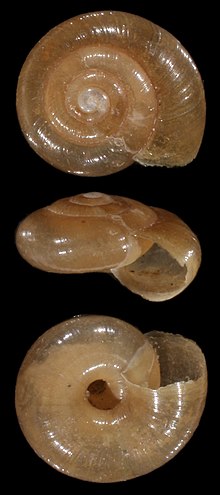name the outer skeleton of a snail
Snail is a common name applied to most of the members of the molluscan class Gastropoda that have coiled shells in the adult stage. When the word is used in its most general sense, it includes sea snails, land snails and freshwater snails. The word snail without any qualifier is however more often applied to land snails than to those from the sea or freshwater. Snail-like animals that naturally lack a shell, or have only an internal shell, are often called slugs, and land species that have only a very small shell (that they cannot retract into) are called semislugs.
The three species of the Giant African land snail Achatina fulica can grow to be 15 in (38 cm) from snout to tail, and weigh 1 kilogram (2 lb).[citation needed] The largest living species of sea snail is Syrinx aruanus which has a shell that can measure up to 90 cm (35 in) in length, and the whole animal with the shell can weigh up to 18 kg (40 lb).
Snails that respire using a lung belong to the group Pulmonata, while those with gills form a paraphyletic group; in other words, snails with gills are divided into a number of taxonomic groups that are not very closely related. Snails with lungs and with gills have diversified widely enough over geological time that a few species with gills can be found on land, numerous species with a lung can be found in freshwater, and a few species with a lung can be found in the sea.
Snails can be found in a very wide range of environments including ditches, deserts, and the abyssal depths of the sea. Although many people are familiar with terrestrial snails, land snails are in the minority. Marine snails constitute the majority of snail species, and have much greater diversity and a greater biomass. Numerous kinds of snail can also be found in fresh waters. Most snails have thousands of microscopic tooth-like structures located on a ribbon-like tongue called a radula. The radula works like a file, ripping the food into small pieces. Many snails are herbivorous, eating plants or rasping algae from surfaces with the radula, though a few land species and many marine species are omnivores or predatory carnivores.





